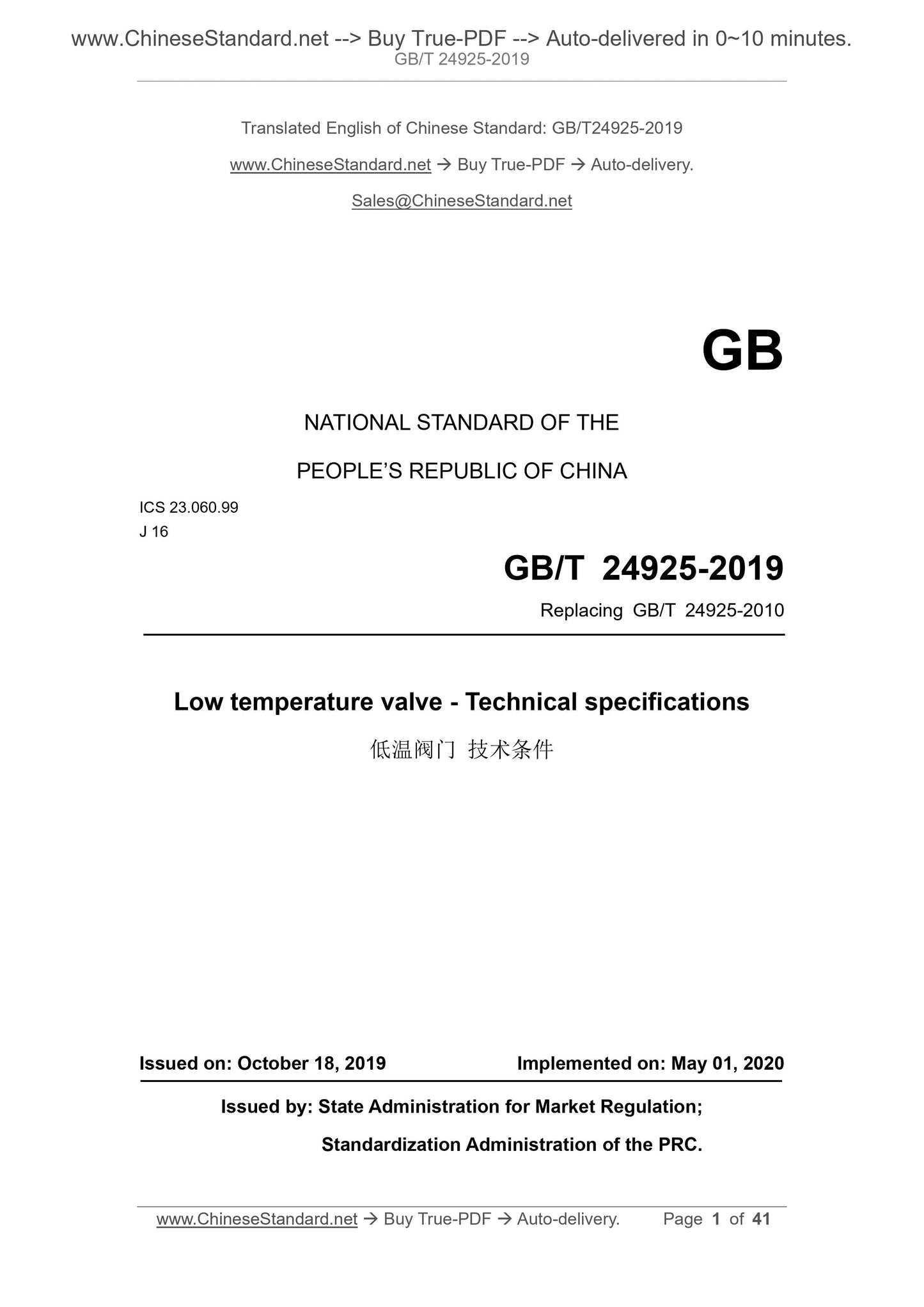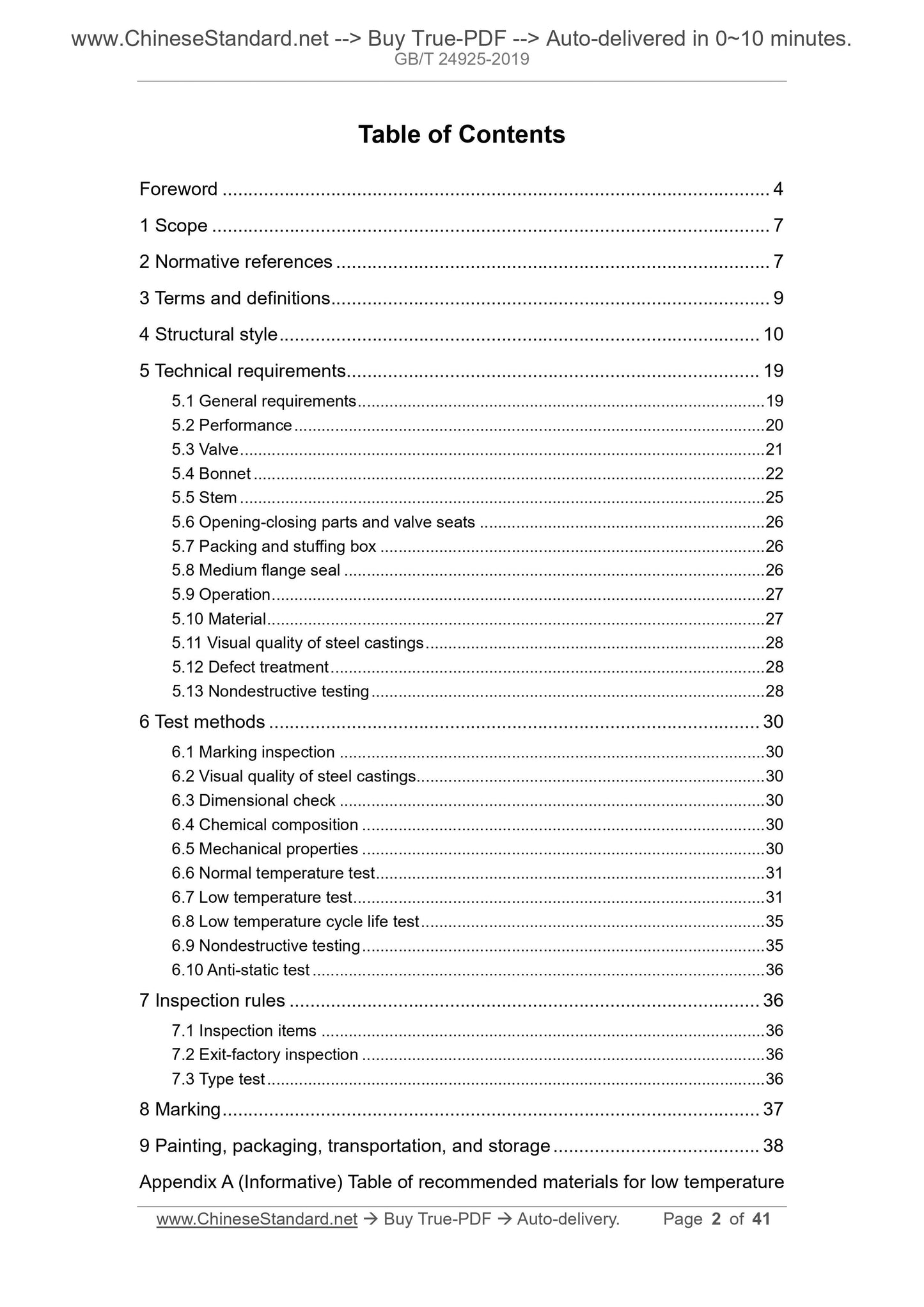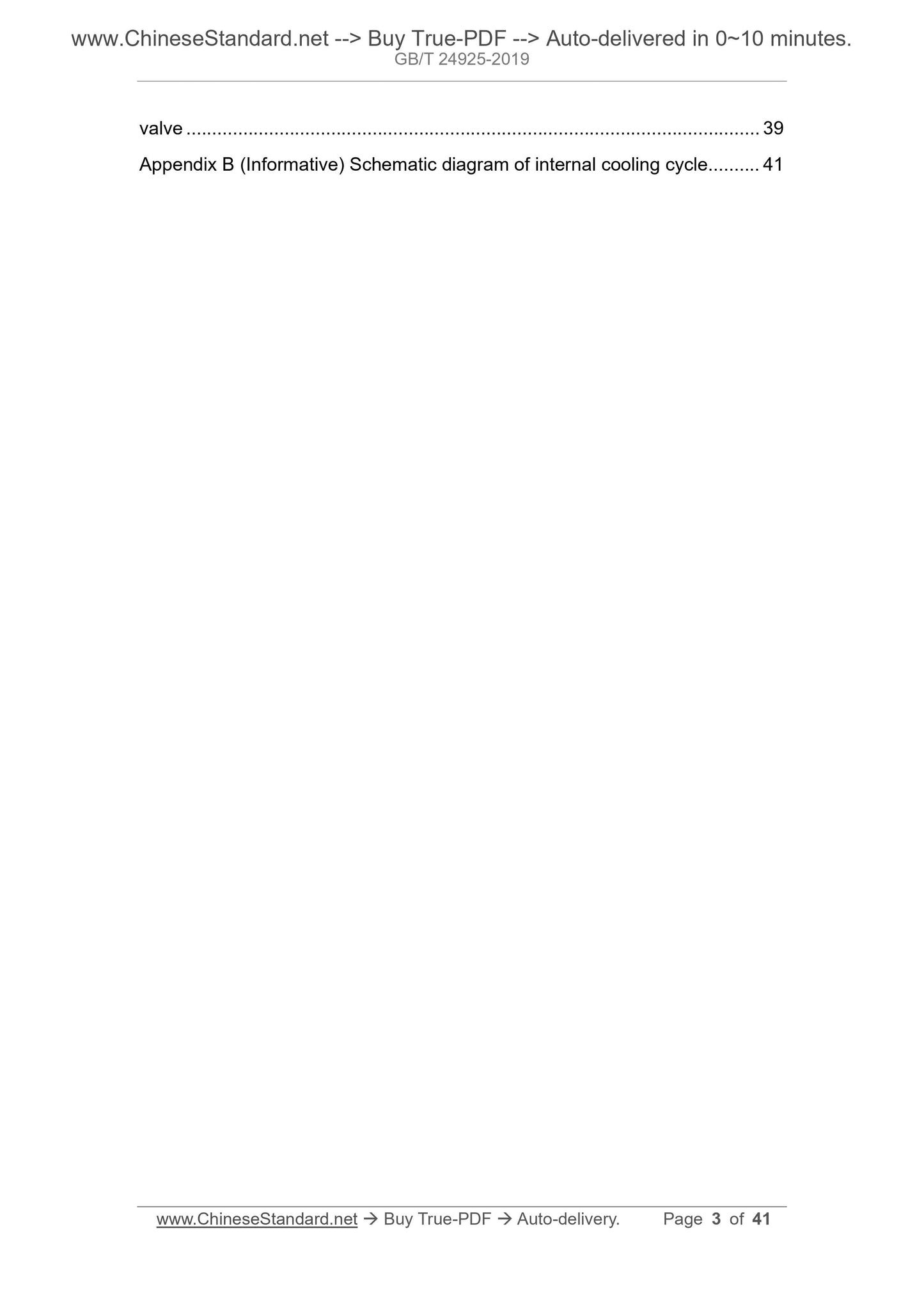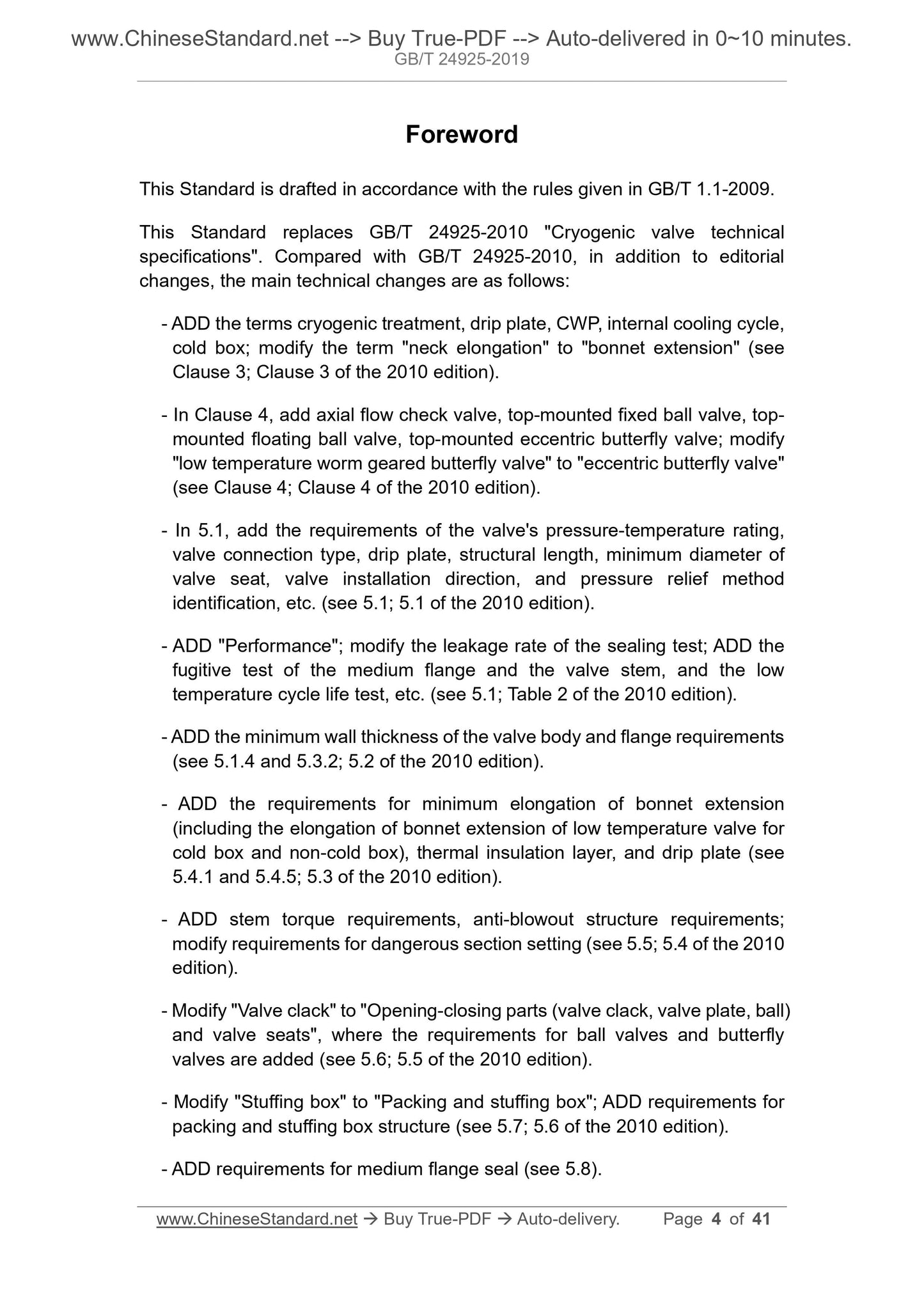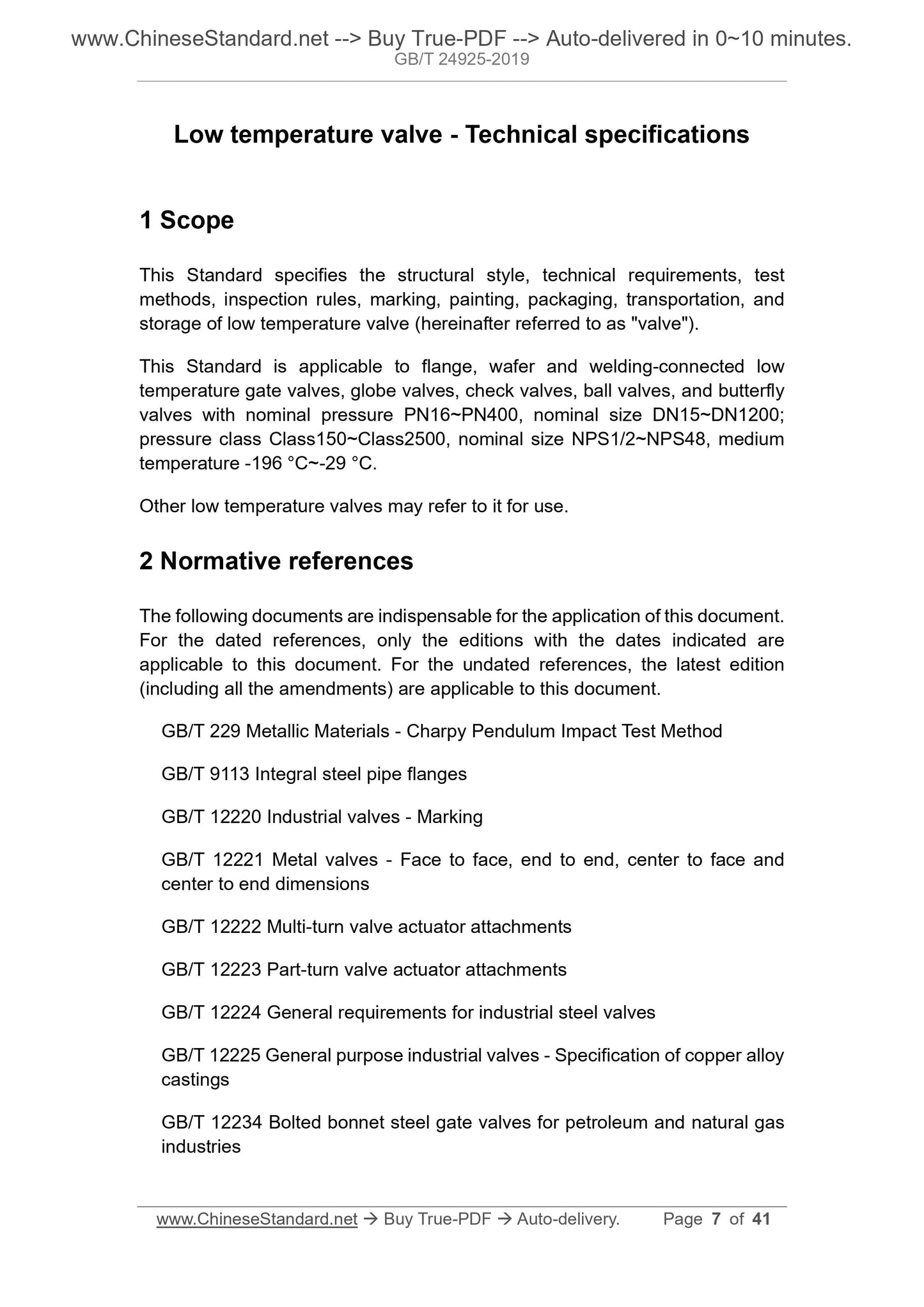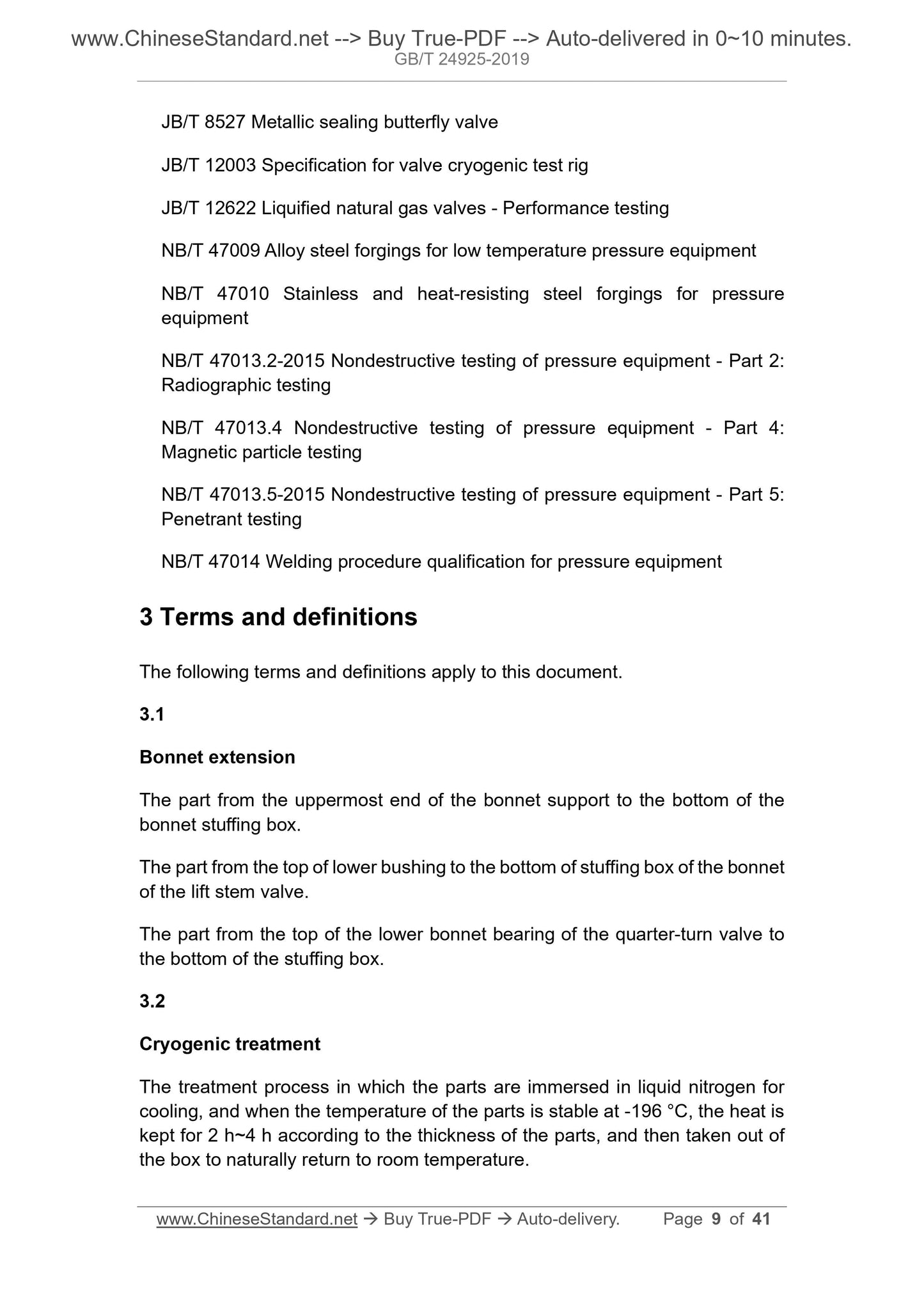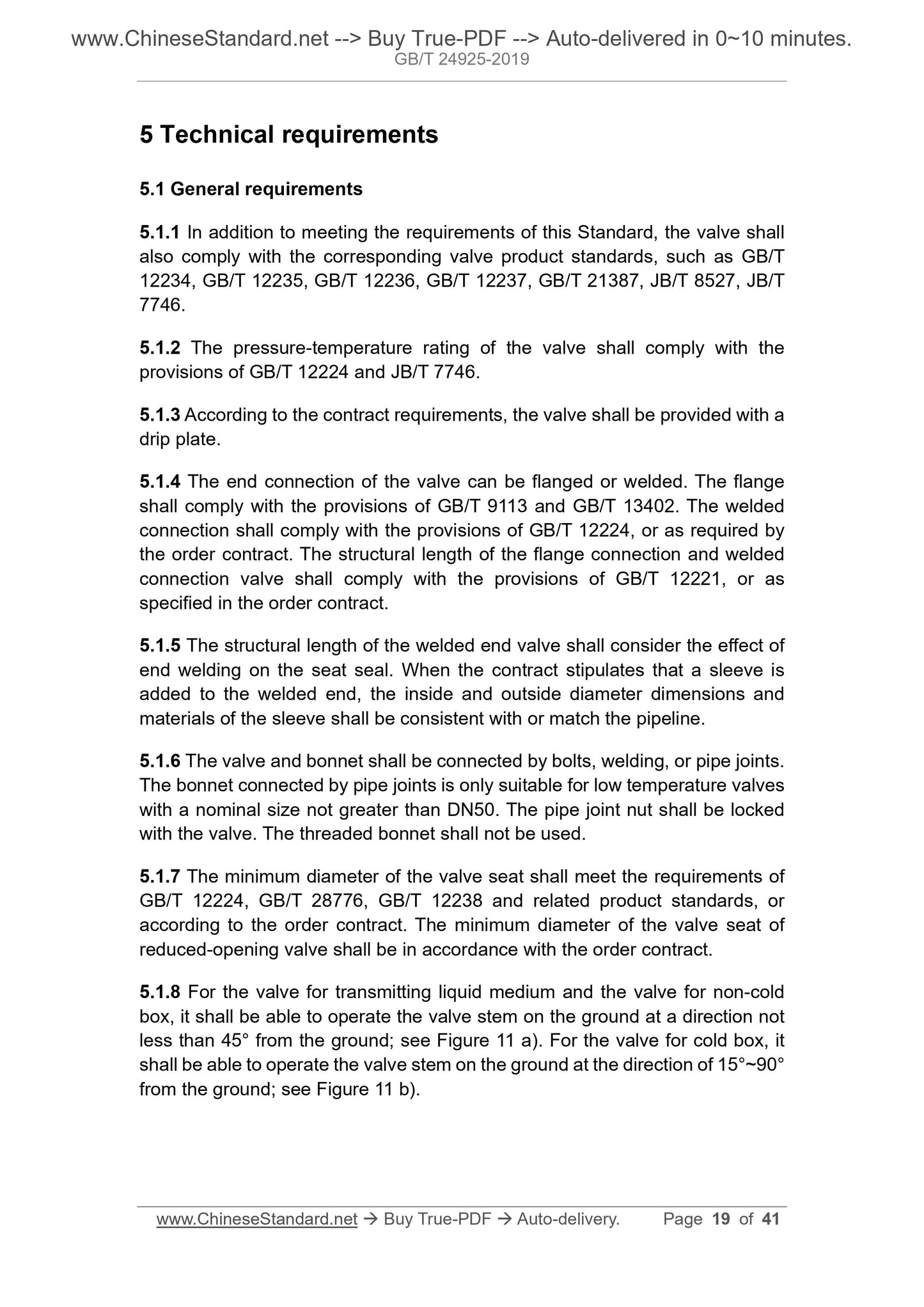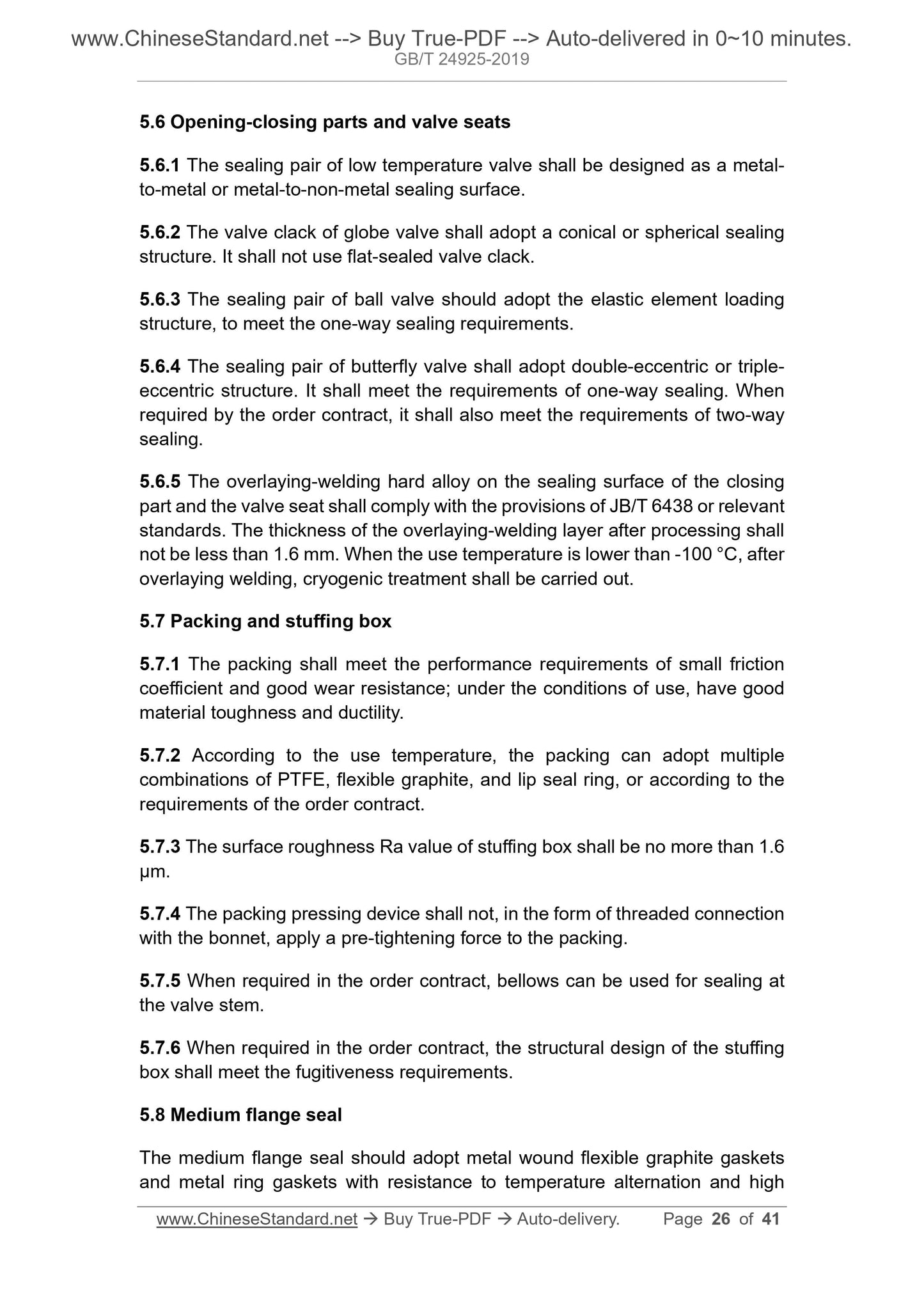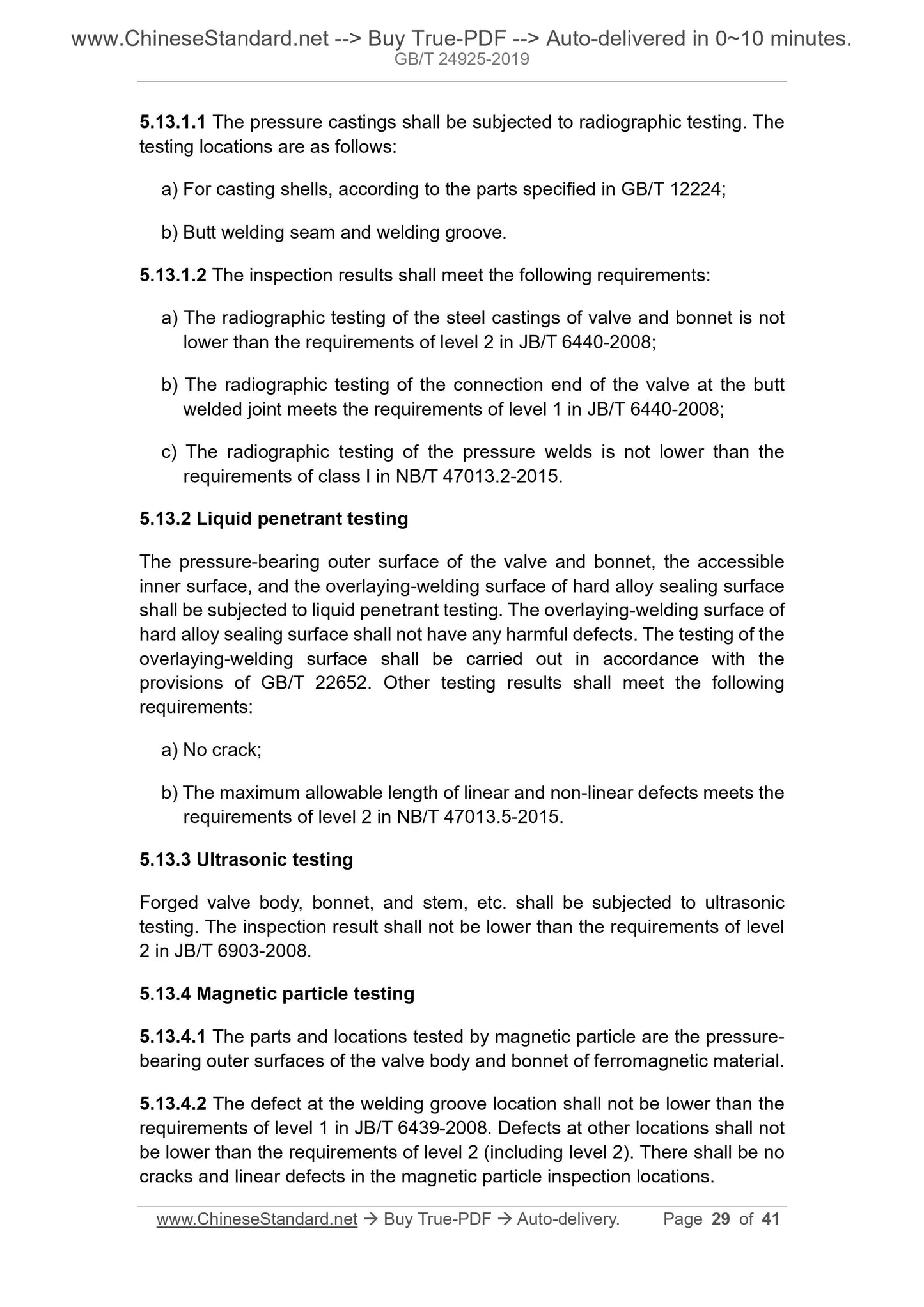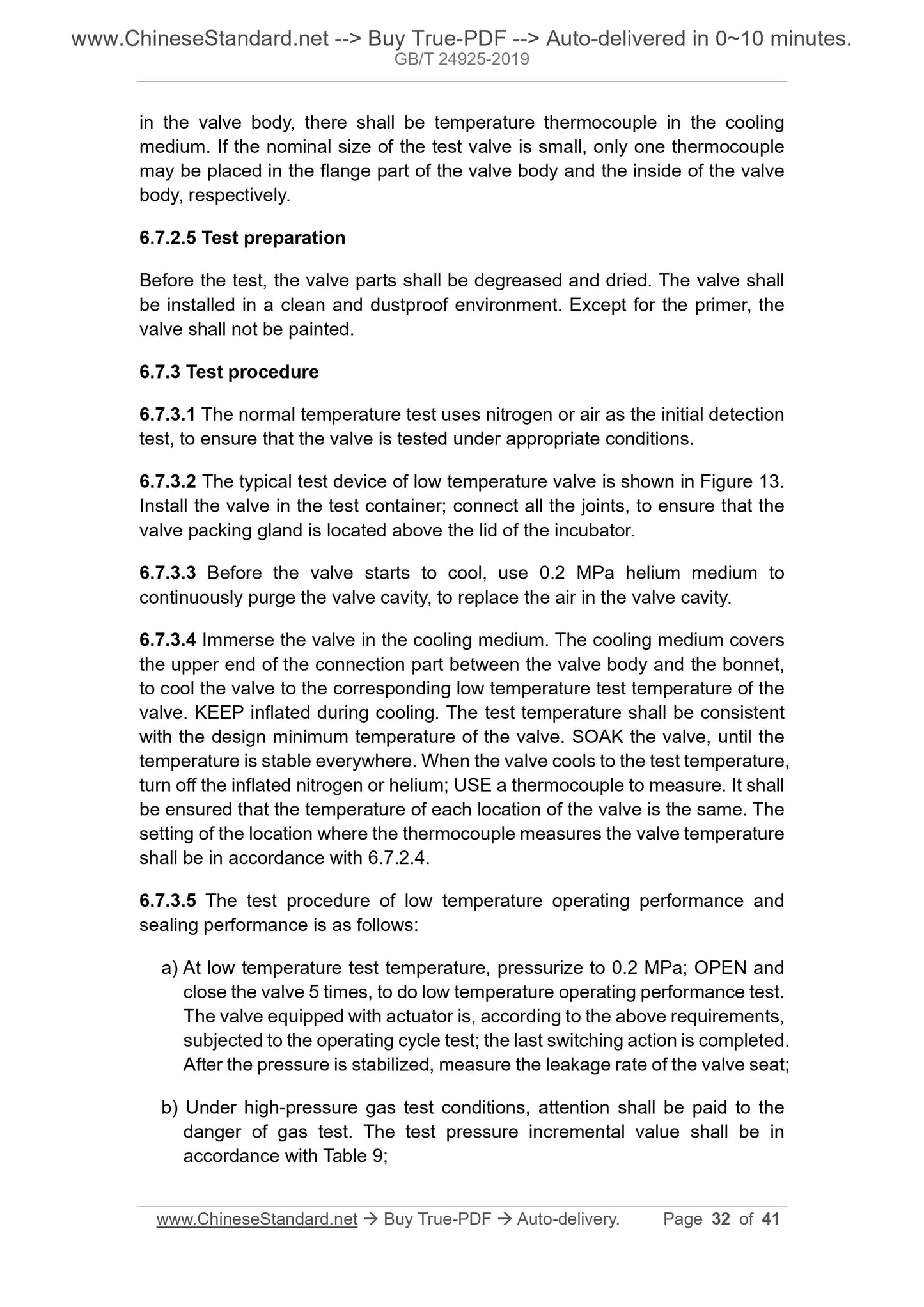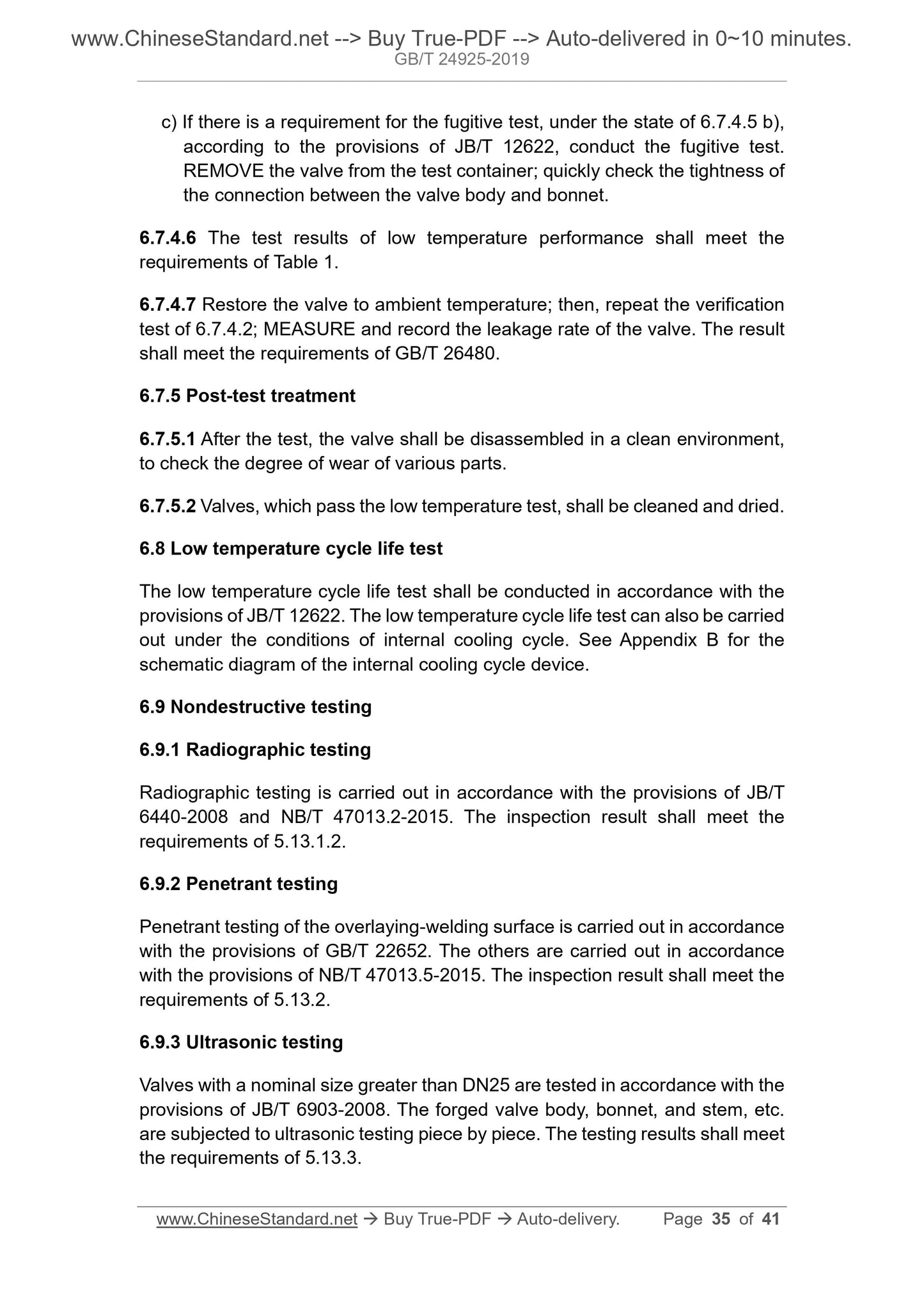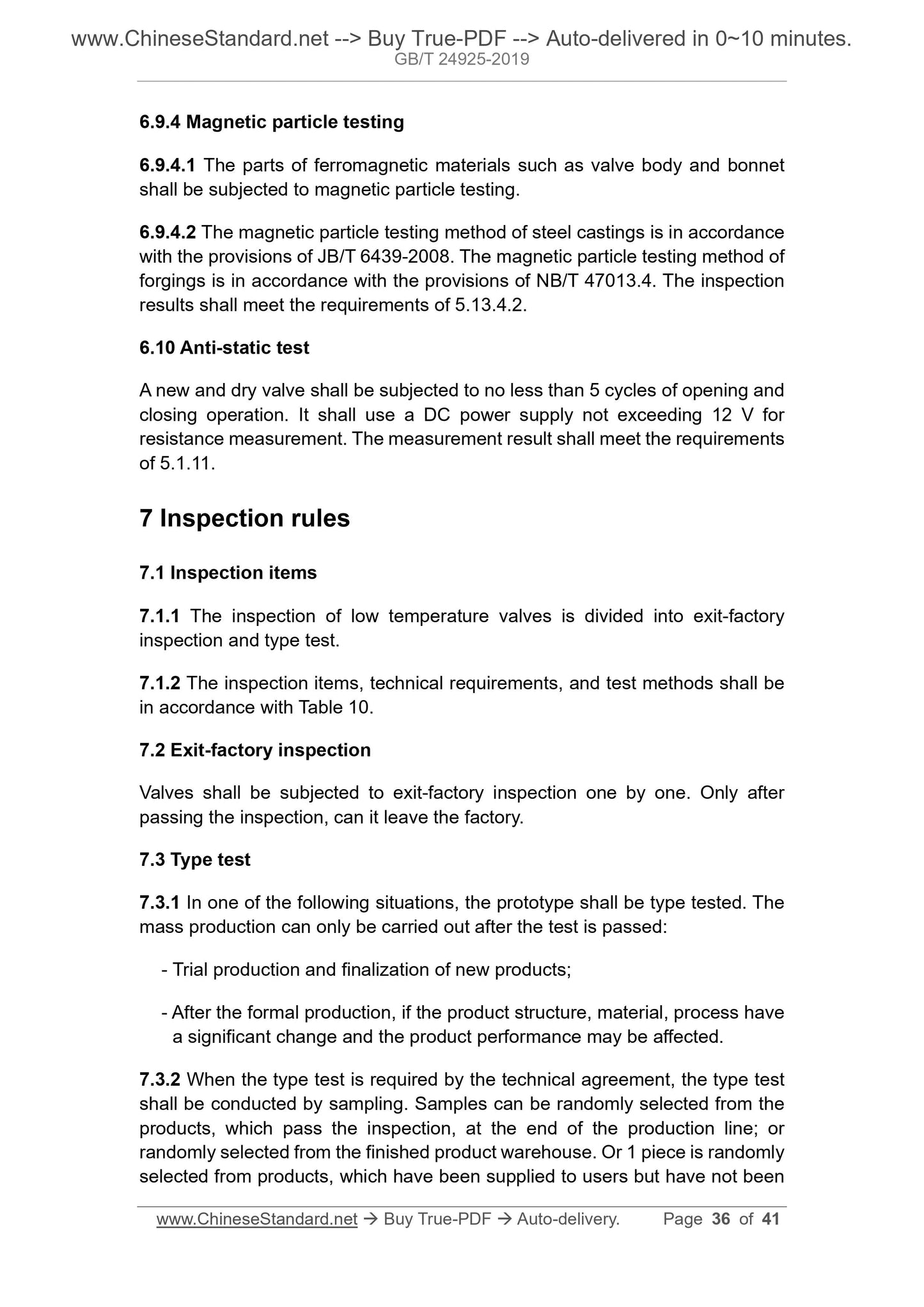1
/
of
12
www.ChineseStandard.us -- Field Test Asia Pte. Ltd.
GB/T 24925-2019 English PDF (GB/T24925-2019)
GB/T 24925-2019 English PDF (GB/T24925-2019)
Regular price
$385.00
Regular price
Sale price
$385.00
Unit price
/
per
Shipping calculated at checkout.
Couldn't load pickup availability
GB/T 24925-2019: Low temperature valve - Technical specifications
Delivery: 9 seconds. Download (and Email) true-PDF + Invoice.Get Quotation: Click GB/T 24925-2019 (Self-service in 1-minute)
Newer / historical versions: GB/T 24925-2019
Preview True-PDF
Scope
This Standard specifies the structural style, technical requirements, testmethods, inspection rules, marking, painting, packaging, transportation, and
storage of low temperature valve (hereinafter referred to as "valve").
This Standard is applicable to flange, wafer and welding-connected low
temperature gate valves, globe valves, check valves, ball valves, and butterfly
valves with nominal pressure PN16~PN400, nominal size DN15~DN1200;
pressure class Class150~Class2500, nominal size NPS1/2~NPS48, medium
temperature -196 °C~-29 °C.
Other low temperature valves may refer to it for use.
Basic Data
| Standard ID | GB/T 24925-2019 (GB/T24925-2019) |
| Description (Translated English) | Low temperature valve - Technical specifications |
| Sector / Industry | National Standard (Recommended) |
| Classification of Chinese Standard | J16 |
| Classification of International Standard | 23.060.99 |
| Word Count Estimation | 30,382 |
| Date of Issue | 2019-10-18 |
| Date of Implementation | 2020-05-01 |
| Issuing agency(ies) | State Administration for Market Regulation, China National Standardization Administration |
Share
